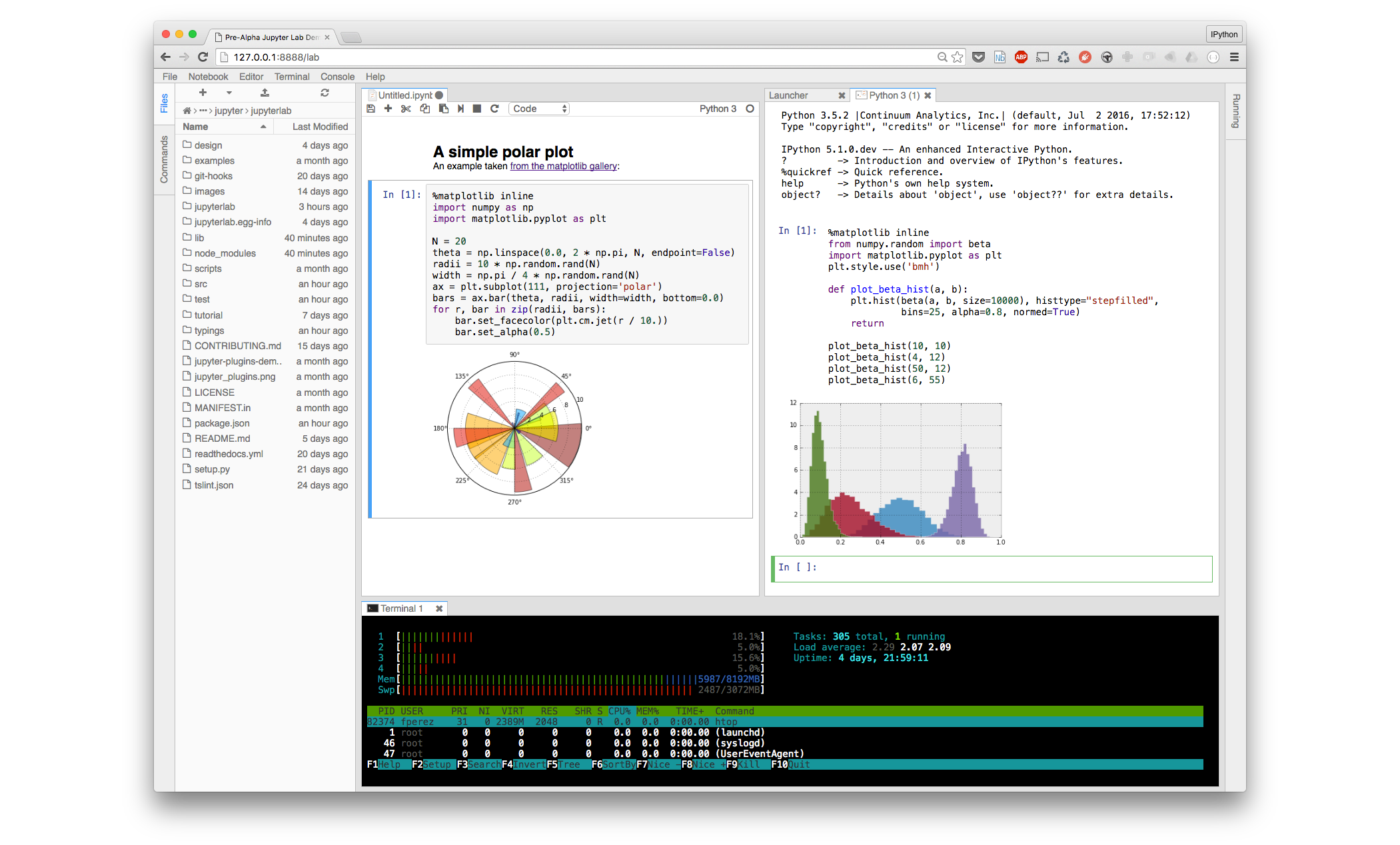
- JUPYTERLAB VS JUPYTERHUB HOW TO
- JUPYTERLAB VS JUPYTERHUB CODE
- JUPYTERLAB VS JUPYTERHUB PASSWORD
- JUPYTERLAB VS JUPYTERHUB PROFESSIONAL
Additionally, the company has enabled the installation of these without the need to construct JupyterLab with Node.js. Jupyter’s current release includes a new visual debugger, as well as new methods for publishing and installing extensions via Python pip or Conda packages. JupyterLab App is compatible with Linux, macOS, and Windows operating systems based on Debian and Fedora. This package includes a command palette that appears as a floating window on top of the JupyterLab workspace, allowing users to rapidly launch a command while leaving the sidebar closed or navigating between sidebar panels. JupyterLab has switched to Jupyter Server as of the third version, a new Jupyter project built on the server element of the traditional Notebook server.

Indeed, JupyterLab supports different languages and enables users to choose their display language using the language pack included with Jupyter. The developer has indicated that features relating to data manipulation would be prioritised.” He continued, “JetBrains anticipates that DataSpell will provide a more practical and efficient environment for working with data in general. Individuals engaged in data research were required to use editors, developer integrated development environments or standalone Jupyter notebooks”.
JUPYTERLAB VS JUPYTERHUB CODE
Jupyter notebooks are augmented with folding tracebacks, intelligent Python code aid, interactive tables, and out-of-the-box tables of contents, all of which make it easier to adhere to best practices.Īndrey Cheptsov, product manager at JetBrains, stated that “There has never been a dedicated IDE for data science in the Python ecosystem. However, the new IDE will not be a replacement for Jupyter notebooks but rather work alongside them on local PCs. JetBrains DataSpell will provide data scientists with enhanced experience for managing and writing code. The new IDEs will be offered to data scientists via an early access programme, enhancing the experience of regular notebooks. JetBrains announced the release of new integrated development environments (IDEs) for data scientists who construct AI models using a variety of programming languages, including Python. “It is a self-contained desktop application that includes a Python environment and numerous prominent Python libraries that are pre-configured for use in scientific computing and data science operations.” Previously, JupyterLab was kept within a web browser environment, however, with the latest improvements, it is now a standalone application. JupyterLab is an open-source web application, described as “the cross-platform standalone application distribution of JupyterLab. Let’s have a look at JupyterLab and JetBrains Dataspell’s functionality. Dataspell is a new entry on the block, an IDE designed specifically for data scientists. Text editors such as VSCode can also be used however, they are time-consuming.
JUPYTERLAB VS JUPYTERHUB PROFESSIONAL
On the one hand, there’s Jupyter for maximal interactivity, and on the other, there’s P圜harm for a professional atmosphere.
JUPYTERLAB VS JUPYTERHUB PASSWORD
It.) Alternatively, you can specify a username and password afterįor guidance about securing a notebook server, refer to the Jupyter documentation.The market for data science IDEs isn’t overly crowded. Typically appears in the terminal output from where you can copy With an authentication token enabled, the URL with the token (If you start the server in the VS Code terminal Server's URI (hostname) with the authentication token included withĪ URL parameter. When prompted to Enter the URI of a Jupyter server, provide the.
JUPYTERLAB VS JUPYTERHUB HOW TO

You can offload intensive computation in a Jupyter Notebook to other computers by connecting to a remote Jupyter server.


 0 kommentar(er)
0 kommentar(er)
